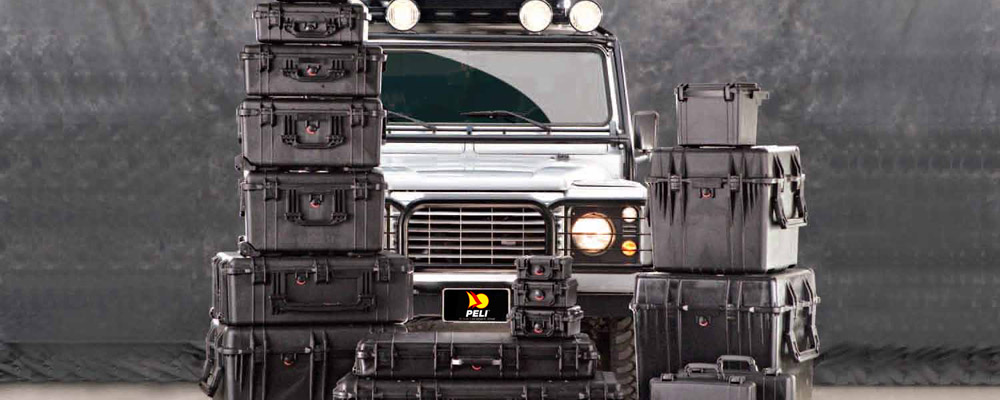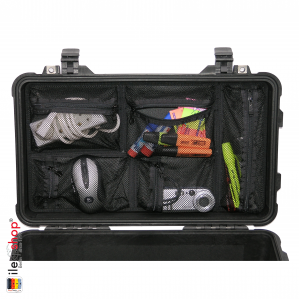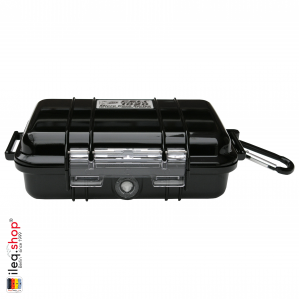Q ABOUT CASES
Where do I find replacement foam sets for Peli cases?
Replacement Foam sets for all Peli case models can be found on the product page for each case model. Alternatively you can click here and select your replacement foam set from our Foam page.
Do you have CAD drawings in electronic format for the Peli case models available?
CAD drawings for Peli cases can be found on the european Peli.com website. Please click here.
CAD drawings for Peli cases and Peli Storm cases can be found on the US Pelican.com website. Please click here.
What material(s) are the Peli cases made from?
The Peli cases are made out of a Polypropylene copolymer material that is light weight, durable and highly chemical resistant.
What temperatures can the Peli cases tolerate?
The Peli cases will withstand temperatures from -23.3ºC (-10ºF) to +98.9ºC (+210ºF)
What adhesives and/or paints can be used on the cases?
Due to the nature of the polypropylene being chemically inert, very little will attack the material. That also means that very few adhesives and paints will adhere satisfactorily. For an adhesive, we have found that 3M’s DP-8005 two-part adhesive works very well with our case material. It has also been reported that “Shoe Goo” works very well. For paint, Krylon has a product out called Fusion that they claim will adhere to polyolefin-based materials like polypropylene.
Are there any hazardous substances in the Peli case material?
RoHS, or “Restriction on Hazardous Substances” - RoHS specifically bans or restricts the use of lead, cadmium, mercury, hexavalent chromium, polybrominated biphenyls (PBB) and polybrominated biphenyl ethers (PBDE). At the July 1, 2006 implementation of the RoHS provisions, Peli cases will not contain the banned or restricted materials and will therefore be RoHS compliant. NOTE: Directive 2000/95/EC of the European Parliament and of the Council of 27 January 2003 on the restriction of the use of certain hazardous substances in electrical and electronic equipment – is aimed at reducing the hazardous materials content in electronic products as well as increasing the recycling efforts for these products.
What testing have you done? Certifications?
Peli cases have been tested to Ingress Protection (IP), Def Stan 81-41/STANAG 4280, MIL-C-4150J and ATA 300. Certificates are on file and copies are available upon request. Please note that for deep submersion internal bulkheads should be installed.
Are the Peli cases water resistant?
Yes, the Peli cases are water resistant. There is an o-ring seal in the lid and a Gore-Tex® membrane in the pressure equalization valve that keep water out of the case.
How does the Pressure Equalization Valve work?
The Pressure Equalization Valve is a simple device. It consists of a housing with a hole through it that is covered with a thin Gore-Tex® membrane. According to the Gore™ tech sheet: “The microporous expanded polytetraflouroethylene (ePTFE) membrane continuously allows the free passage of gases and vapours, equalizing the pressure differential between the enclosure and ambient before it builds to the point that a seal is compromised. Water, dust and dirt are repelled by the hydrophobic membrane, thereby protecting expensive and sensitive electronics”.
What is the o-ring made of?
The o-ring seal is made of EPDM or Ethylene Propylene Diene Monomer. It is well known for its excellent ozone, weathering and aging resistance. It also has excellent water and steam resistance, maintains its flexibility at low temperatures, features excellent resistance to alkalis, acids and oxygenated solvents and is very colour stable. (It is not recommended for resistance to oil, gasoline and hydrocarbon solvents.) EPDM is found in a wide range of applications and is excellent for use outdoors.
What about custom sizes and colors?
Custom sizes may be available based on many factors, like quantities or design requirements. The cases are available in custom colours based on customer requirements. There are certain conditions that must be met when making cases in custom colours. Please contact us for more detailed information.
Q ABOUT FLASHLIGHTS
What does the term "non-incendive" mean?
Lights have a circuit in which any arc or thermal effect (heat) produced under normal operating conditions of the equipment is not capable of igniting a particular flammable gas/vapor mixture, in the air.
What types of lamp does Peli Lights use?
Peli lamps are gas filled with Xenon, Halogen, or Krypton gas. High intensity LEDs are also used on selected models.
What is RECOIL LED TECHNOLOGY™?
Think of a lighthouse in the palm of your hand. By mounting and pointing the LED backwards into the reflector, 100% of the light is captured and reflected forward. The result is a true collimated beam with brightness that rivals or surpasses incandescent lights.
Can you use rechargeable batteries in alkaline torches?
Alkaline torches will function with rechargeable batteries, but we strongly advise against this. The lamp life is cut drastically by doing this. Also, this will void the light's safety approvals.
What is the difference between a laser spot beam and a modified spot beam?
The laser spot beam is a tight collimated beam and the modified spot is a flood beam.













